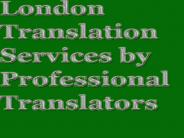Technical Translation Infographic - PowerPoint PPT Presentation
Title:
Technical Translation Infographic
Description:
With this infographic, Quick Lingo is attempting to demonstrate just how important technical translation services are when it comes to industry specific sectors. With continued globalisation comes the need for many new and pre-existing documents and manuals to be read by foreign language speakers. The infographic also iterates the need for complete accuracy in this area of translation to ensure the safety of all involved. – PowerPoint PPT presentation
Number of Views:1191
Title: Technical Translation Infographic
1
The Science Behind
Technical Translation
What is it?
Technical translation relates to a wide range of
documents spanning all manner of technological
and scientific subjects.
What kind of documents are translated?
Material specifications, operating manuals and
technical reports are just some of the many
documents translated on a frequent basis.
What does it involve?
Technical translations require a high level of
knowledge and mastery of subject specific
terminology. Any misinterpretation or mistake in
the translations of user manuals or guides could
lead to a potentially dangerous situation for
users. A notable aspect of this type of
translation is the precision with which words are
used - technical writing has to be exact, direct
and to the point, essentially giving a translator
the task of producing a perfect word-for-word
translation.
What are the areas of interest?
Mining Energy Machinery Aerospace Electronics
Automotive Manufacturing Oil and Gas
Extraction IT Telecommunications Power Tools
and Automation
Quick Lingo Ltd.
2
The Importance of a Controlled Translation
What does it involve?
Controlled Translation has slowly emerged in the
past few years as a new business model which
features the use of controlled languages,
pre-editing, machine translation, translation
memory software, and post-editing processes in
order to speed up and standardise the
multilingual production of technical
documentation.
This new model is increasingly being adopted by
industries such as telecommunications and
software localisation, and offers an excellent
framework that meets the translation needs of the
automotive industry.
When and why was it introduced?
Controlled languages were first used in the
aeronautic industry to tackle the increasing
complexity of the aircraft's technical
documentation, and since then they have been
introduced in other areas such as heavy-equipment
machinery.
What happened next?
The automotive industry also followed the path
initiated by the aeronautic and heavy-equipment
industry General Motors, for instance, in 1993
started the CASL Project (Controlled Automotive
Service Language) for technical documentation
and the Swedish manufacturer Scania also explored
the feasibility of defining controlled Swedish
for truck maintenance documentation .
Quick Lingo Ltd.
3
Main benefits
Clear and direct writing Consistency in the
style of the text Reduction of syntactic and
lexical ambiguity Reusability of the text
And as a direct consequence...
A reduction in the cost of authoring and
translation processes along with higher customer
satisfaction because of better documentation and
translation.
The process is divided in three parts
Pre editing
Translators need to have the skills to adapt text
to the Controlled Language guidelines so that the
translatability of the source text is improved.
Pre-editing guidelines can often be found in the
literature of Controlled Languages when
grammatical and lexical constraints are described.
Controlled translation
By combining the capabilities of Translation
Memory software and Machine Translation,
productivity is increased and consistency is
maintained in all documentation produced.
Post editing
This is an activity mainly associated with
MachineTranslation. Clearly, since MT provides
almost 100 accuracy only under certain
restricted circumstances (limited vocabulary and
grammar, use of a sublanguage), all other output
must be post-edited one way or another. Post
Editing ranges from browsing to full process
depending on translation motivation, i.e. whether
it is simply the process of "translating to
understand" (inbound translation) or the process
of "translating to communicate" (outbound
translation).
Quick Lingo Ltd.































